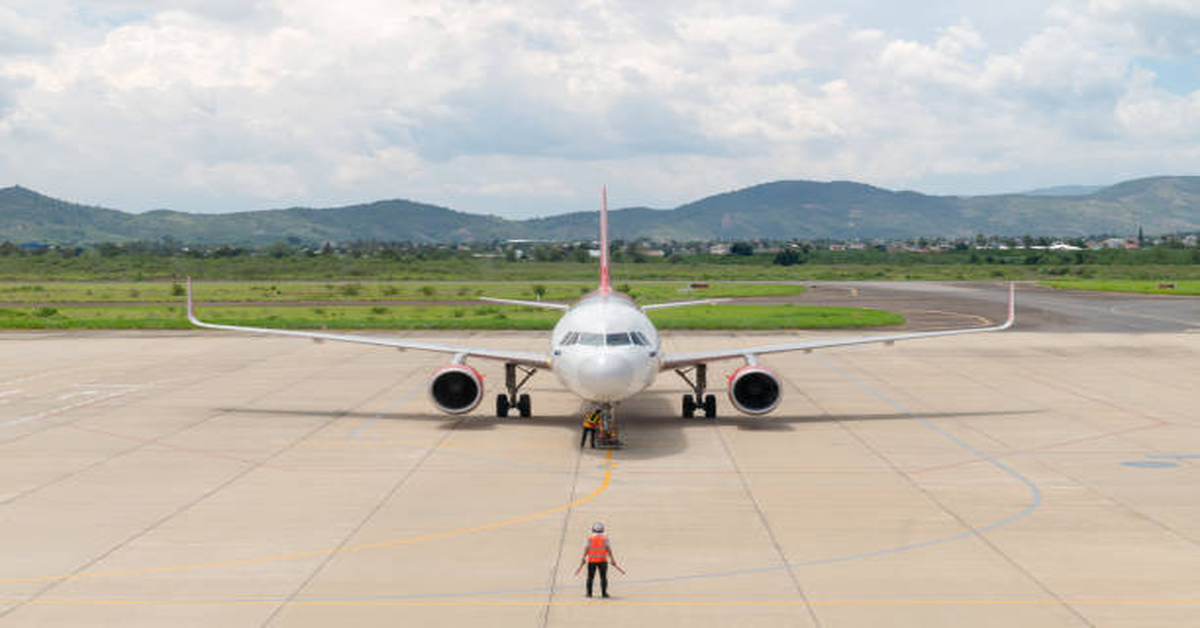
When most people think of air travel, their attention gravitates toward takeoff, flight, and landing. However, an equally crucial yet often overlooked phase of air travel happens on the ground: taxiing. Taxiing at an airport refers to the controlled movement of an aircraft while it is still on the ground, moving under its own power, typically along taxiways, aprons, and holding points. It is the bridge between runway operations and terminal procedures, and its efficiency determines not only how quickly passengers reach their destination but also how safely aircraft are managed within the often complex ecosystem of an taxiing at airports.
Taxiing is not merely about steering an aircraft from point A to point B on the ground; it involves an intricate balance of navigation, coordination with air traffic control (ATC), compliance with safety rules, and precise communication between pilots and ground personnel. This stage is where operational efficiency, environmental considerations, and passenger convenience intersect, making taxiing a fundamental part of modern aviation logistics.
In this comprehensive article, we will dive deeply into the world of taxiing at airports, exploring its definition, procedures, challenges, safety protocols, technological advancements, and its future role in a rapidly changing aviation industry.
1. Understanding Taxiing in Aviation
Taxiing at airports is defined as the movement of an aircraft on the ground under its own engine power, excluding takeoff and landing. Unlike pushback, where ground vehicles move aircraft away from gates, taxiing relies on the thrust from engines and precise control inputs by the pilot to navigate designated taxiways.
Key Components of Taxiing
- Taxiways: Paved paths linking runways with aprons, hangars, and terminals.
- Aprons: Parking areas where boarding, refueling, and maintenance occur.
- Holding Points: Predefined areas near runways where aircraft wait for takeoff clearance.
- Runway Access Points: Junctions where taxiways connect to active runways.
Taxiing is always performed at relatively low speeds—generally between 20 to 40 knots, depending on airport design and conditions. The goal is not speed but precision and safety, as taxiways are often crowded with multiple aircraft, ground support vehicles, and taxiing at airports personnel.
2. Why Taxiing Matters
Taxiing at airports may appear to be a simple process, but it holds significant importance:
- Operational Efficiency: Smooth taxiing reduces delays and ensures optimal runway usage.
- Safety: Proper taxiing prevents ground collisions, incursions, and misrouting.
- Environmental Impact: Prolonged taxiing increases fuel consumption and emissions.
- Passenger Comfort: Quick and efficient taxiing minimizes wait times before takeoff or after landing.
For large hub airports with dozens of simultaneous departures and arrivals, taxiing represents a logistical puzzle where every second matters. Poor taxiing procedures can ripple through the system, causing flight delays, missed connections, and operational bottlenecks taxiing at airports.
3. Taxiing Procedures
The taxiing at airports process differs depending on whether the aircraft is preparing for takeoff or heading to the gate after landing.
Taxiing Before Takeoff
- Pushback (if required): Aircraft are moved from gates by tow trucks.
- Engine Start: Engines are powered up to begin independent movement.
- Taxi Clearance: Pilots receive taxi instructions from ground control.
- Following Taxiways: Aircraft navigate to designated holding points.
- Pre-Takeoff Checks: System checks and line-up at the runway.
Taxiing After Landing
- Runway Exit: Aircraft leaves the runway at designated taxi exits.
- Taxi Instructions: ATC provides route guidance to the gate.
- Cooling Procedures: Engines are adjusted to reduce power gradually.
- Arrival at Apron: Aircraft is directed to its assigned parking stand.
- Shutdown and Docking: Engines are powered down and ground services take over.
4. Airport Ground Control and Communication
Ground control plays a vital role in managing taxiing at airports. Unlike the tower controllers responsible for takeoffs and landings, ground controllers direct aircraft on taxiing at airports and aprons. Their responsibilities include:
- Assigning taxi routes.
- Coordinating pushbacks.
- Preventing runway incursions.
- Managing simultaneous taxiing of multiple aircraft.
Communication Protocols
Pilots communicate with ground control using precise phraseology to avoid ambiguity. Example:
- Ground Control: “Delta 215, taxi via Alpha, Bravo, hold short runway 27.”
- Pilot: “Taxi via Alpha, Bravo, hold short 27, Delta 215.”
This concise communication ensures clarity, prevents misunderstandings, and enhances safety.
5. Challenges in Taxiing
Despite being a routine procedure, taxiing at airports poses several challenges:
| Challenge | Explanation |
|---|---|
| Runway Incursions | Aircraft or vehicles mistakenly enter active runways. |
| Low Visibility | Fog, rain, or snow reduce pilot visibility on taxiways. |
| Congestion | Busy airports experience delays during peak hours. |
| Human Error | Miscommunication between pilots and controllers can lead to accidents. |
| Fuel Burn | Delays during taxiing increase unnecessary fuel consumption and emissions. |
| Complex Airport Layouts | Larger airports have intricate taxiway networks that increase pilot workload. |
These challenges highlight the importance of training, planning, and technological innovation in ground operations.
6. Safety Protocols During Taxiing
Pilot Responsibilities
- Adhere to speed limits on taxiways.
- Maintain situational awareness of aircraft and vehicles around.
- Follow ATC instructions precisely.
Airport Measures
- Taxiway lighting systems for low visibility conditions.
- Clear signage for directions and holding points.
- Ground radar to monitor movements.
Prevention of Runway Incursions
Runway incursions are among the most severe risks during taxiing. Preventive steps include:
- Enhanced training for pilots and controllers.
- Surface movement radar for ground controllers.
- Advanced visual aids like runway status lights.
7. Taxiway Design and Infrastructure
Taxiing at airports are not randomly constructed; they follow strict engineering and safety guidelines.
| Design Aspect | Details |
|---|---|
| Pavement Strength | Built to handle heavy loads from large aircraft. |
| Markings and Signage | Yellow centerlines, holding point markings, and direction boards. |
| Lighting Systems | Blue edge lights and green centerline lights for night operations. |
| Geometry | Curves designed to minimize sharp turns for wide-body aircraft. |
| Separation | Adequate spacing between taxiways to avoid conflicts. |
Proper taxiway design enhances not only safety but also operational efficiency.
8. Environmental and Economic Impact of Taxiing
Taxiing at airports consumes substantial fuel, especially for large aircraft like the Boeing 777 or Airbus A380. According to industry estimates, extended taxiing can burn hundreds of kilograms of fuel per flight. This translates into:
- Higher operational costs for airlines.
- Increased carbon emissions, affecting sustainability goals.
- Air quality issues in surrounding airport communities.
Innovations in Reducing Impact
- Electric taxiing systems (wheel motors powered by onboard batteries).
- Use of single-engine taxiing to cut fuel usage.
- Optimized taxiway planning by ATC to minimize waiting times.
9. Emerging Technologies in Taxiing
Technology is transforming ground operations in remarkable ways taxiing at airports:
- Electric Taxi Systems (ETS): Aircraft equipped with electric motors on wheels reduce reliance on jet engines.
- Surface Movement Guidance and Control Systems (SMGCS): Enhances low-visibility operations through precise navigation aids.
- Artificial Intelligence (AI): Predicts taxiing times and optimizes ground traffic flows.
- Green Taxiing Solutions: Focused on sustainability by cutting emissions.
- Advanced Cockpit Displays: Provide pilots with real-time maps of airport taxiways.
These innovations make taxiing safer, faster, and more environmentally responsible.
10. The Future of Taxiing
Looking ahead, taxiing will continue to evolve as airports modernize and sustainability becomes central. The key future trends include:
- Autonomous Taxiing: Pilotless taxiing systems guided by AI and ground sensors.
- Integration with Smart Airports: Taxiing will be part of an interconnected system optimizing everything from gate allocation to runway scheduling.
- Hybrid-Electric Propulsion: Ground taxiing may rely entirely on electric power, reducing emissions drastically.
- Data-Driven Operations: Big data will allow predictive analytics to minimize taxiing delays and disruptions.
11. Training and Human Factors
Taxiing at airports is not only about machines and infrastructure—it is also about people. Pilot training emphasizes ground navigation as much as flight maneuvers. Human factors such as fatigue, stress, or miscommunication are responsible for a large share of taxiing incidents. Continuous training, simulation exercises, and human performance monitoring are essential to mitigate these risks.
12. Case Studies: Lessons from Real Incidents
- Runway Incursion at LAX (2007): A miscommunication led to two aircraft entering the same runway area, avoided only by last-minute correction.
- Congestion at Heathrow: The complexity of taxiways at one of the world’s busiest airports shows how proper planning reduces bottlenecks.
- Fog-Related Taxi Delays: Airports with advanced surface radar have shown improved safety in low visibility.
These examples highlight the constant need for vigilance, technology, and collaboration.
Conclusion
Taxiing at airport is more than a mechanical act of moving an aircraft from gate to runway and back. It is a delicate orchestration of technology, human skill, safety protocols, and infrastructure management. From ensuring passenger comfort to reducing fuel burn, from preventing accidents to integrating sustainable practices, taxiing embodies the challenges and triumphs of modern aviation.
As aviation evolves, taxiing will play an even more prominent role, driven by technological innovation and sustainability imperatives. For passengers, it may remain an unnoticed part of their journey, but for pilots, controllers, and engineers, it is a vital piece of the aviation puzzle that ensures safety, efficiency, and progress.
FAQs
1. What does taxiing at an airport mean?
taxiing at airports refers to the controlled movement of an aircraft on the ground under its own power, excluding takeoff and landing.
2. Why is taxiing important in aviation?
It ensures safe ground movement, prevents collisions, reduces delays, and contributes to passenger comfort and operational efficiency.
3. How fast do airplanes taxi on the ground?
Taxi speeds generally range between 20–40 knots, depending on conditions and airport rules.
4. What challenges are faced during taxiing?
Challenges include low visibility, runway incursions, congestion, miscommunication, and increased fuel consumption during delays.
5. How is technology improving taxiing?
Technologies like electric taxiing systems, AI-based traffic optimization, and surface movement guidance are making taxiing safer and more efficient.






